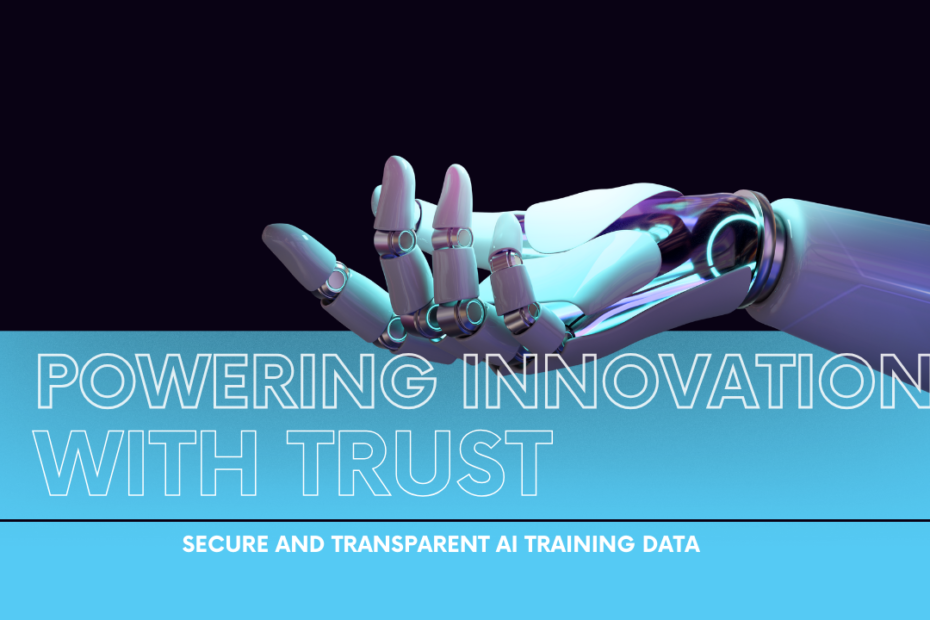Data is the lifeblood of Artificial Intelligence (AI). Just as a powerful engine requires high-quality fuel to function optimally, AI models rely on vast amounts of training data to learn and perform tasks. However, concerns about data quality, privacy, and ownership pose significant hurdles in the development of trustworthy and ethical AI.
This article explores how innovative technologies like blockchain can revolutionize AI training data by ensuring:
- Security: Data breaches and unauthorized access can compromise the integrity of AI models. Blockchain, with its distributed ledger technology, offers a secure and tamper-proof platform for storing sensitive training data.
- Transparency: Understanding the origin and composition of training data is crucial for mitigating bias and ensuring fairness in AI outcomes. Blockchain allows for the creation of auditable trails, enabling users to verify the provenance and ownership of the data.
Blockchain: Securing the AI Data Pipeline
Blockchain technology functions as a decentralized database, where data is distributed across a network of computers. This distributed architecture offers several advantages for securing AI training data:
- Immutability: Once data is recorded on a blockchain, it cannot be altered or deleted without detection. This ensures the authenticity and integrity of the training data.
- Encryption: Blockchain utilizes robust cryptography to encrypt data, protecting it from unauthorized access and malicious manipulation.
- Auditability: All transactions on a blockchain are documented in a permanent and publicly verifiable ledger. This allows stakeholders to track the movement and usage of data, fostering transparency and accountability.
AI for Enhanced Data Analysis
While blockchain safeguards the security of training data, AI can play a crucial role in extracting valuable insights from this secured data. Here’s how:
- Data Cleaning and Preprocessing: AI algorithms can efficiently identify and remove errors, inconsistencies, and biases from training data. This improves the quality of the data and leads to more reliable AI models.
- Feature Engineering: AI can automatically extract relevant features from complex datasets, allowing developers to build more accurate and efficient AI models.
- Anomaly Detection: AI can be used to detect anomalies and outliers within the training data, potentially revealing security breaches or attempts to manipulate the data.
A Win-Win for Data Providers and Developers
By leveraging both blockchain and AI, a win-win situation can be created for data providers and AI developers:
- Data Providers: Blockchain empowers data providers with greater control over their data. They can establish clear ownership rights and determine how their data is used. Additionally, secure data storage minimizes the risk of breaches and unauthorized access, fostering trust and encouraging data sharing.
- AI Developers: Secured and transparent data through blockchain allows developers to build more robust and reliable AI models. They can access high-quality data with verifiable provenance, leading to fairer and more trustworthy AI applications.
Conclusion
The future of AI hinges on the availability of secure, transparent, and high-quality training data. By harnessing the power of blockchain and AI, we can create a secure data ecosystem that fosters collaboration, innovation, and the development of responsible AI solutions. As AI continues to evolve, this focus on secure and transparent training data will be central to ensuring the ethical and beneficial implementation of this powerful technology.
Challenges and Considerations
While blockchain offers a promising solution for securing and managing AI training data, there are still challenges to address:
- Scalability: Current blockchain platforms may struggle to handle the massive datasets required for training complex AI models. Scalability solutions are under development, but ensuring efficient data storage and retrieval on a blockchain remains an ongoing effort.
- Integration: Integrating blockchain technology with existing AI development workflows requires careful planning and adaptation. Developers need to develop tools and methodologies that seamlessly integrate with blockchain-based data storage and access mechanisms.
- Regulation: The legal and regulatory landscape surrounding blockchain and AI is still evolving. Clear guidelines are needed to address issues like data ownership, privacy rights, and liability in the context of blockchain-based AI training data.
The Road Ahead
Despite these challenges, the potential benefits of blockchain for AI training data are undeniable. As research and development efforts continue, we can expect to see advancements in:
- Scalable Blockchain Solutions: The development of new blockchain protocols specifically designed for handling large datasets will be crucial for wider adoption in AI.
- Standardized Integration Tools: The creation of standardized tools and APIs will simplify the integration of blockchain technology into existing AI development pipelines.
- Regulatory Frameworks: The development of clear and comprehensive regulations will provide much-needed clarity and encourage responsible innovation in the field of blockchain-based AI.
Conclusion: A Collaborative Future for AI
The successful implementation of secure and transparent AI training data requires a collaborative effort from various stakeholders, including:
- Tech Companies: Tech giants like Google, Microsoft, and IBM have a significant role to play in developing scalable blockchain solutions and standardized integration tools for AI developers.
- Governments: Governments can establish clear regulatory frameworks that promote responsible innovation while protecting data privacy and security.
- Academia: Universities and research institutions can play a crucial role in developing the next generation of blockchain and AI technologies specifically tailored for secure and ethical AI development.
By working together, we can unlock the full potential of AI while ensuring that this powerful technology is developed and deployed responsibly. The future of AI is not just about technological advancements, but also about building trust and fostering collaboration between all stakeholders involved.

